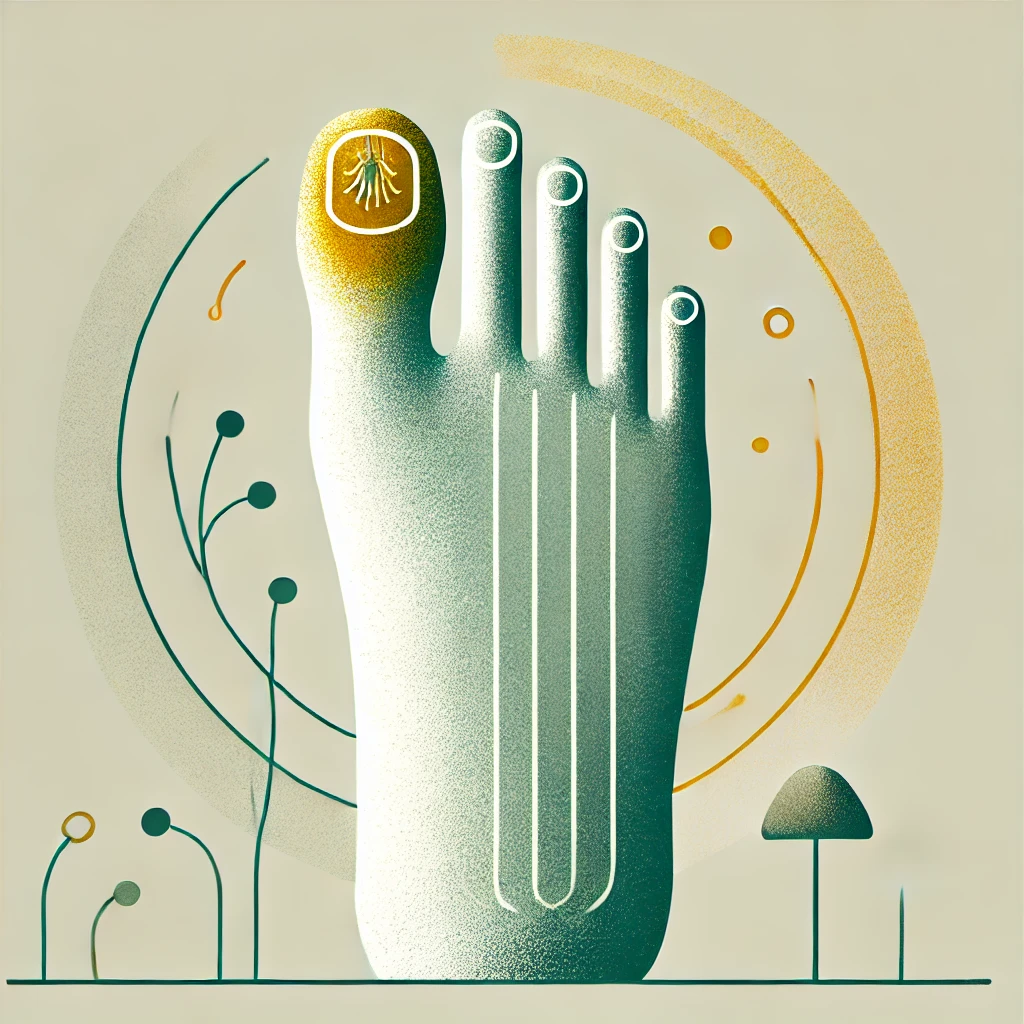What Should I Do If I Have Nail Fungus? A Functional and Medical Guide to Healthy Nails

Embarrassed by Discolored, Thick Toenails? You’re Not Alone—Here’s What to Do About Nail Fungus
If you’ve noticed yellow, brittle, or thickened nails that are hard to trim or hide, you may be dealing with nail fungus, also known as onychomycosis. It’s one of the most common nail issues in adults and can affect both toenails and fingernails—although toenails are more often affected.
Fungal nail infections can be persistent and difficult to treat without the right approach. But the good news is, whether you’ve had it for a few weeks or a few years, there are effective strategies—both conventional and natural—that can help you clear the infection and restore healthy, clear nails.
Let’s explore what nail fungus is, why it happens, and what you can do to get rid of it—and keep it from coming back.
What Is Nail Fungus?
Nail fungus is an infection caused by dermatophytes, yeasts, or molds that invade the nail bed and surrounding skin. It typically begins as a white or yellow spot under the nail and progresses deeper over time.
Common Signs of Nail Fungus:
- Discolored (yellow, brown, or white) nails
- Thickened or brittle nails
- Nails that separate from the nail bed (onycholysis)
- Foul odor from the nail
- Crumbling or distorted nail shape
- Pain or discomfort, especially when walking or wearing shoes
What Causes Nail Fungus?
Several factors can increase your risk of developing fungal nail infections:
- Poor foot hygiene
- Walking barefoot in communal areas (gyms, pools, locker rooms)
- Tight, non-breathable footwear
- Athlete’s foot (tinea pedis) spreading to the nails
- Reduced circulation (common in diabetes and older adults)
- Immune suppression
- Nail trauma
- Fungal overgrowth in the body (especially in those with gut dysbiosis or candida)
What Should You Do If You Have Nail Fungus?
Here’s a step-by-step guide to effectively treat and prevent fungal nail infections—combining medical therapies with a functional medicine approach to support long-term nail health.
1. Get a Proper Diagnosis
Before jumping to treatment, it’s important to confirm that the issue is truly fungal. Other conditions (like psoriasis or trauma) can mimic fungal nail changes.
Your provider may:
- Visually inspect the nail
- Clip or scrape a sample for microscopy or fungal culture
- Send a piece of the nail for PCR testing (highly sensitive)
A proper diagnosis ensures you don’t waste time on ineffective treatments.
2. Topical Antifungal Treatments (for Mild to Moderate Cases)
Over-the-counter or prescription antifungal creams, lacquers, and solutions can be effective when the infection is not deeply embedded.
Options include:
- Efinaconazole (Jublia)
- Ciclopirox (Penlac)
- Tolnaftate
- Tea tree oil (natural option with antifungal properties)
- Undecylenic acid (found in natural remedies)
Tip: File or thin the nail first so the medicine can penetrate deeper.
3. Oral Antifungal Medications (for Moderate to Severe Cases)
If your nail fungus is extensive or has been present for a long time, oral medications are often more effective.
Most common:
- Terbinafine (Lamisil) – typically taken for 6–12 weeks
- Itraconazole (Sporanox) – used in pulse therapy or continuous dosing
These drugs work by helping the nail grow out free of infection over several months. However, they may require liver monitoring and aren’t suitable for everyone.
4. Laser Nail Fungus Treatment
Laser therapy is an increasingly popular, FDA-cleared option that uses light energy to destroy fungal cells beneath the nail without harming surrounding tissue.
Benefits:
- Painless
- No downtime
- No systemic side effects
- Effective in combination with topical therapies
Multiple sessions may be needed for optimal results.
5. Support Your Immune System and Gut Health (Functional Medicine Approach)
Fungal infections often reflect a weakened immune system or internal fungal overgrowth, especially with recurring infections. Healing from the inside out helps prevent recurrence.
Tips:
- Remove refined sugar and processed carbs that feed yeast and fungus
- Support gut health with probiotics and fiber-rich foods
- Avoid alcohol and antibiotics unless absolutely necessary
- Consider a gentle candida cleanse under practitioner supervision
- Boost antifungal support with oregano oil, caprylic acid, or berberine
6. Practice Daily Nail Hygiene
Small habits make a big difference when treating and preventing nail fungus:
- Keep nails clean and dry
- Trim nails short and file down thick areas
- Change socks daily (use moisture-wicking fabrics)
- Wear breathable shoes and rotate footwear
- Use antifungal foot powders or sprays if prone to sweating
- Disinfect nail clippers and avoid shared tools at salons
- Wear shower shoes in public areas
7. Be Patient—Healing Takes Time
Even with the right treatment, clearing nail fungus takes several months because toenails grow slowly (about 1 mm/month).
- Fingernails may take 4–6 months to clear
- Toenails often require 9–12 months to grow out fully clear
Tracking progress with monthly photos can help you stay motivated.
When to See a Specialist
You should consult a podiatrist, dermatologist, or vein specialist if:
- Your nail fungus is worsening or painful
- You have diabetes or poor circulation
- There is recurrent infection
- Topical treatments are not working
- You want to explore laser therapy or advanced options
Final Thoughts: You Can Get Rid of Nail Fungus
Nail fungus may be persistent, but it’s not unbeatable. With the right combination of targeted treatment, lifestyle support, and root-cause care, you can restore healthy, clear nails and prevent future infections.
At Sheen Vein & Cosmetics, We Treat Nail Fungus at the Source
Whether you need medical therapy, laser treatment, or a root-cause plan to prevent recurrence, we offer comprehensive care for nail fungus and other skin and vein conditions. We combine science with personalized solutions to help you look and feel your best—starting at the feet.
Schedule your nail evaluation or laser consult today and take the first step toward clear, healthy nails.